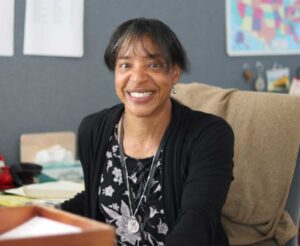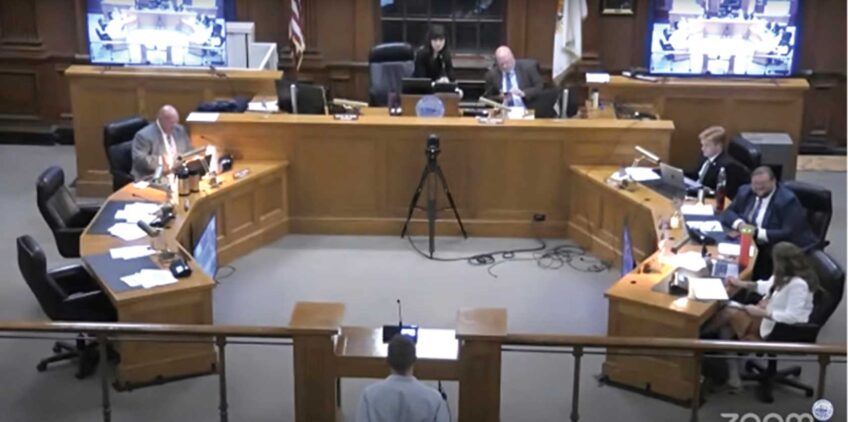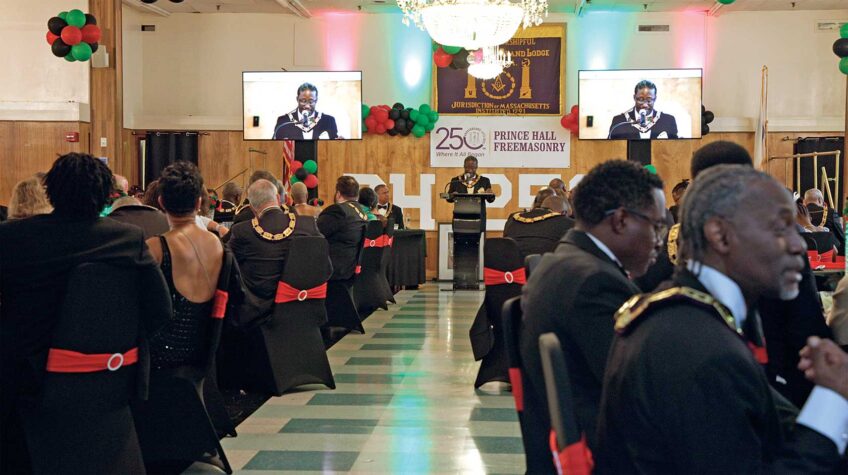
Low-income solar programs offer residents, including renters, the opportunity to support solar energy growth in the state as Massachusetts pushes toward ambitious climate goals — in theory.
In practice, advocates and community solar providers say complex billing procedures limit the participation of the low-income residents the programs are targeted to include.
According to figures from the state, only about 2,000 low-income households subscribe to community solar arrays out of a potential client base of 400,000, an abysmally low penetration rate of .5 percent. While the state reports a total of 20 developers offering community solar credits through 39 arrays, a single developer – Citizens Energy Corporation of Boston – claims over 2,200 subscribers alone.
The contradictory and head-scratching numbers are symptomatic of a program that leaves many consumers, especially renters in Black and brown communities, on the sidelines of the green revolution.
In the case of the state’s premier low-income community solar program, the system is hampered by deals complicated by dual billing — where subscribers must pay one bill from their utility and another from their community solar provider — as well as two-way transactions, where a subscriber pays a utility in one direction and also receives solar credits in the other.
The confusion, along with the high costs associated with signing up subscribers, sending bills and collecting payments, has resulted in low participation rates among both low-income consumers and solar developers.
For low-income households, the program’s structure can make it hard to track what you’re actually getting for your money, said Charlie Harak, a senior attorney for energy and utilities issues at the National Consumer Law Center.
“The deals are so complicated that we caution people about signing on, but not because we think they’re inherently dangerous or that they’re all bad,” Harak said.
Those complications can keep people from signing up or sticking with the solar programs, said Kristina Perez, director of charitable programs at Citizen Energy Corporation, which runs the JOE-4-SUN community solar program.
“When you’re low income, you have a thousand things on your plate and even though you’re getting a discount, having to write another bill, having to write out another check to pay us is a lot of work for most of our clientele,” Perez said, adding that households save about $300 annually on their electricity bill through solar credits generated by over a half-dozen ground-mounted arrays scattered around the state.
Citizens Energy generates the electricity, moves it onto the grid and receives credits from the utilities which are then distributed to subscribers. The confusion comes when bills in the mail require households to pay a portion of their bill to the utility and another to Citizens.
In March, in a letter to the Department of Public Utilities, Citizens Energy President Joe Kennedy III called the billing system “unnecessarily complex,” citing the multiple bills each month as a source of confusion as low-income residents who have to reconcile multiple accounts and risk losing access if they don’t make payments to both the utility and community solar project owner separately.
The landscape is also sparce, said Harak, with limited options for community solar programs that are accepting new subscribers.
According to data published by the state, low-income community solar projects under the state’s Solar Massachusetts Renewable Target total about 63.6 megawatts and serve a small slice of the eligible population.
Despite those barriers, Massachusetts’s Executive Office of Energy and Environmental Affairs is touting community solar programs as a way for low-income residents to support the state’s transition to renewable energy as part of a climate action campaign launched in March, but large gaps in uptake still exist.
According to an Eversource spokesperson, about 152,000 residents in the state are on the utility’s discounted rate — which residents can qualify for if they receive other benefits programs, for example under the Supplemental Nutrition Assistance Program, MassHealth or Supplemental Security Income.
As of the start of March, about 1,200 Eversource customers were signed up for low-income community solar programs, according to numbers filed with the state’s Department of Public Utilities.
For National Grid, in November, WBUR reported that that about 259,000 customers of that utility received the discounted rate. In the numbers reported to the state in March, 674 discounted National Grid customers subscribed to community solar.
Advocates say legislative changes could increase participation and close some of those gaps.
Perez said a switch to consolidated billing — where all the charges would be paid in one bill through the utility — would keep more people in the system and supporting the solar programs.
“If we went to consolidated billing, I can guarantee you that it would be very, very rare for someone to come off the program,” she said.
She cited Citizen Energy’s projects in California and New York, which use consolidated billing, where subscribers tend to come off of the low-income community solar program only if they die or move away.
Legislation at the State House aims to clear the way for that billing change and get more people to access low-income community solar programs in Massachusetts.
The provision, part of an omnibus legislation package that moved out of the Joint Committee on Telecommunications, Utilities and Energy in April, would grant the state’s Department of Public Utilities the ability to create a consolidated billing system in Massachusetts.
“The goal is to have less customer confusion and a more seamless experience for the solar company in terms of how they’re paid,” said Rep. Jeff Roy, who chairs the Joint Committee on Telecommunications, Utilities and Energy. “This is all aiming to create better outcomes for low-income solar customers and help them participate in the clean energy transition.”
The Executive Office of Energy and Environmental Affairs supports the switch and is committed to working with the Legislature on the reform, said Maria Hardiman, a spokesperson for the office.
“The Healey-Driscoll administration sees value in consolidated billing for community solar, providing increased transparency, a simplified billing process, and greater consumer protections,” she said in a statement.
A spokesperson for Eversource said the utility supports consolidated billing through net crediting — where the community solar fee appears on the utility bill — and said it has a proposal in front of the Department of Public Utilities to change low-income community solar billing to that effect.
New York state adopted a net crediting system for its community000 solar projects in 2019.
Getting more residents to participate in community solar projects could be an important step in moving towards ambitious climate goals in the state, Roy said.
In 2022, the state set a goal to reach net-zero emissions by the year 2050.
“The more participation that we get in all of these programs, the better off we are,” Roy said. With particular to some of the low-income customers who may not have access to put solar on their own homes, this gives them a way to be part of the movement towards net-zero energy.”
As the state and other organizations push for expanded community solar efforts, a local group is pushing community solar as an economic driver in lower-income communities.
Crediting changes in tax credit structures under the Inflation Reduction Act, the Boston Community Solar Cooperative, which launched in March, is gunning to install solar arrays in Dorchester, Roxbury, Mattapan and Jamaica Plain.
It’s a move that Gregory King, the group’s acting president and one of its cofounders, said could pull economic benefits into Boston’s lower-income communities, in addition to the climate benefits.
“We want to be able to offer the environmental benefit, but we think there is more value when we add the ability for passive income to be used for other purposes beyond energy,” King said.
Those economic benefits will come from community ownership of the group’s solar arrays, something King said wasn’t so possible before the changes made under the IRA. The plan will see solar panels installed on Boston buildings. Unlike existing community solar project array, the co-op’s array will be owned, in sections, by individual community members.
The first site in the works — currently under pre-development as the cooperative applies for permits and finalizes its design — is slated to be constructed on the roof of the Dorchester Food Co-op. There, the energy generated will be sold to the utility and used by the grocery store, while the credits it earns will go to the solar co-op’s members.
King said he hopes that will translate into economic benefits not only through savings with the solar credits, but also through income generated by the community ownership model —the money the co-op earns by selling the electricity to the utility will go to its community owners.
“Our view is that by enabling community ownership, we’re going to allow members not only to get the environmental benefits of clean energy and the reduction in energy costs, but also passive income, because they have an ownership share in the cooperative,” King said. “That passive income can be used for housing, for food for education, as well as energy.”
The founders of the co-op hope that their work can be a mode for a community solar system that is also community-owned, something King thinks will become increasingly important if the electrical grid decentralizes and requires more solar arrays in cities and built environments.
“We’re trying to uplift community,” King said. “We think the energy transition is the opportunity of a lifetime.”









